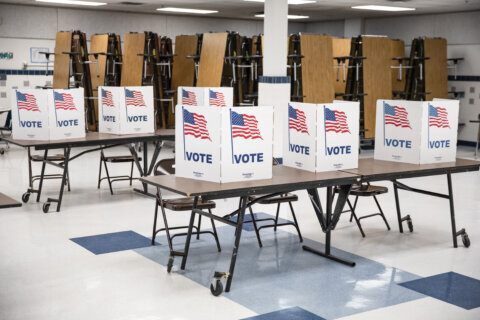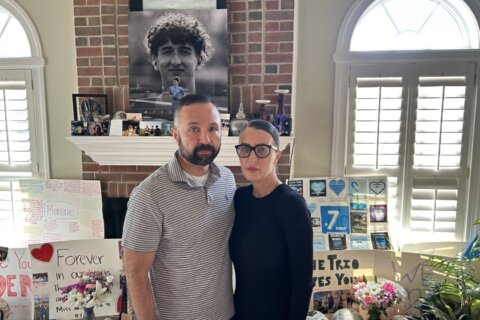FAIRFAX, Va. — The dispute over how high to raise taxes and how much money to give Fairfax County Public Schools next year made little progress toward resolution Friday during a tense meeting between the Board of Supervisors and School Board.
“This budget represents only the most pressing needs of our system,” Superintendent Karen Garza told the group.
Beyond her $2.67 billion proposed budget that asks the county for about $67 million more than supervisors told the school system to expect, Garza says the school system could easily ask for hundreds of millions of dollars more to pay for things like even smaller elementary school class sizes, eliminating the pre-k waitlist with new classrooms, and replacing computers and textbooks.
Her budget does include money for teacher raises and funding for new elementary school teachers.
Members of the Board of Supervisors pointed out that even though Fairfax County is below the regional average for teacher salaries, when total compensation including benefits is considered, the county is near the top.
County Executive Ed Long says there are many things that would be nice to do across the county.
“We do not present a needs-based budget,” he says.
Following guidance from the Board of Supervisors, his budget proposal would give the school system at 3 percent funding increase.
He also recommended that the Board of Supervisors vote Tuesday to advertise a 4-cent tax increase which would potentially provide $23 million more that could be distributed across the budget.
Sources tell WTOP the most likely scenario Tuesday is a vote to advertise the maximum possible tax rate as either a 4-cent or 5-cent increase. After public hearings on the budget in April, the Board of Supervisors could then settle on a lower actual rate, but they are not allowed to go above it.
“One of the things that I believe is realistic on the county side is expectations. Department heads know that we can’t afford to do the things we want to do,” Long says.
School Board Chair Pat Hynes says the school system is realistic, with per-pupil spending down about $1,000 since 2009 when adjusted for inflation.
“You don’t do that without making actual cuts by raising class sizes and freezing teacher pay,” she says.
“Simply that funding has not kept pace with needs,” she adds.
One thing that will help close the proposed budget gap is new funding from the state, but the school board and county board also appear at odds on how to estimate that.
Overall, depending on the budget language that is eventually signed into law, the school system could get an additional $10 million to $21 million for the coming school year.
School Board member Elizabeth Shultz believes the question marks are responsible for some of the tension over funding.
“I think this is the crux of our entire conversation: is it $671 million? Is it $634 million? Or is it $593 million? Because a million here, a million there, sooner or later we’re talking real money,” she says.
The state funding would close the gap between the county’s proposed budget and the school system’s proposed budget to $54 to $58 million.”
Several members of the board of supervisors expressed frustration that the school budget was not worked out more cooperatively with them.
“It’s frustrating on our side too, because we see our system, we’re very concerned about the future of our system,” Superintendent Garza said.
Supervisor Kathy Smith just joined the county board from the school board.
“We sit here, and we’re talking at each other, and we leave an impression to the community that we have to fund two separate pieces,” she says. “I would tell you that we are one community, that the school system is the core of it.”
Supervisor Pat Herrity questioned the school system’s rhetoric, and arguments that the school system has been forced to cut for the last nine years.
“How do you cut every year for nine years when you go from a $2.1 billion budget to a $2.6 billion budget?” he asked.
The schools say the increases have been tied to enrollment, salaries and benefits, things they cannot control.
Supervisor Cathy Hudgins also questioned why the proposed budget does not include more to address the achievement gaps for disadvantaged students.
“Is Japanese immersion our mission? And in my public school system that I see today, what are my outcomes for those that must be part of our economic future? I know where those that are at the top are getting their outcomes because you’re meeting them. But the question is how can we not together afford to meet the needs of those that are at the bottom?” she said.
Many members of both the school board and Board of Supervisors agreed addressing the issue is important.







